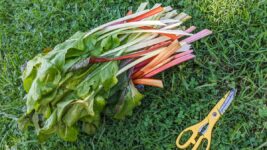
Starting a Garden This Summer? Here’s What to Do Before Planting
Growing up, my family members kept gardens that looked like they belonged in a fairy tale. Thanks to my grandmothers, great aunt and parents, I’ve always known how a beautiful, thriving garden should look. That also means I know just how much hard work and planning goes into cultivating great lawns and gardens.
For beginner gardeners, the sheer amount of effort it takes to begin growing your own flower or vegetable garden — or even just cultivating a great-looking lawn — can be overwhelming. There’s plenty of contradictory information about the right way to do things, and it’s easy to get bogged down in trying to be a perfect gardener. Beyond that, you have to do the physical labor involved in planting your first garden.

From my perspective, the best way to really get started with gardening is to arm yourself with the necessary tools and information, and then let all the complicated watering patterns, lawn designs and composting strategies come later. Read on for some essential tips and tricks for getting your garden started this spring.
For more, here are the 10 best places to buy plants online and five questions to ask before buying outdoor furniture.
Read (and keep) your plant labels and seed packets
One of the best things you can do to set yourself up for gardening success is to read the seed packets and plant labels before planting or even buying your plants. The information on your seed packets will tell you everything you need to know about what your plants will require and what environment they’ll thrive best in.
On a plant label or seed packet, you can find information on how much light your plant will need, how much space your plant requires, and your plant’s hardiness. Hardiness refers to the lowest winter temperature a plant can withstand. For instance, citrus trees won’t be able to survive very low winter temperatures the same way other plants can. You can also see your region’s hardiness zone using this map from the US Department of Agriculture.
By arming yourself with all the information you can get about what you’re planning to plant, you’ll be setting your plants up for a long and healthy life.
Watch your yard
Just like you need to gather all the information about what you’re going to plant, you’ll need to get all the info about where you’ll plant it. By watching your yard, you can observe what areas get the best morning or afternoon sun, and which areas get good shade.
You don’t want to place light-sensitive plants in an area of your yard where they’ll get hours of hot, afternoon sun. Getting to know your yard better will help you avoid any planting mistakes right out of the gate.
Get to know your soil
It’s quite possible that the dirt in your yard won’t be very conducive to growing plants, and it’s pretty easy to test your soil. All you have to do is dig up a small patch in the area where you want to plant your garden.
You’ll want to see if your soil is sandy, mostly made of clay or if it’s rich and dark. Don’t worry if you’re not a soil expert, you just need to be prepared to make observations about how your soil looks and feels (this guide from the University of California Agriculture and Natural Resources is helpful). You can even buy a soil testing kit, to take out some of the guesswork.
If your soil isn’t quite right for planting, never fear. You can buy topsoil or potting soil from your local nursery or lawn and garden store. These soils will be able to provide your plants with all the nutrients they might need. It’ll just take a bit of extra investment on your part.
Equip yourself with the right tools
Investing in simple but high-quality gardening tools when you get started gardening can make your life much easier down the road. All you need to get started is a small spade and a digging fork, a decent pair of gloves and a foam knee pad.
Getting started with planting
Once you’ve picked the right spot, purchased your seeds, and acquired all your tools, it’ll finally be time to start planting. I’d recommend fencing off, or at the very least marking, where you intend to place your first plants.
Depending on whether you’re working with pregrown flowers, or if you’re starting from seeds, you’ll want to prep your garden in different ways. For instance, if you’re planting pregrown flowers, you can simply dig a small hole, place the root ball inside and then cover it with topsoil. If you’re working with seed packets, the packet will tell you exactly how you should be planting your seeds.
Additionally, you can turn to the seed packet or plant label when it comes to deciding how regularly to water your plants, and any other special needs your plants might have as they grow. When in doubt, turn to your plant labels and seed packets.
For more, here are the best garden subscriptions and here’s how to make your grill shine before firing it up for the first time this season.



